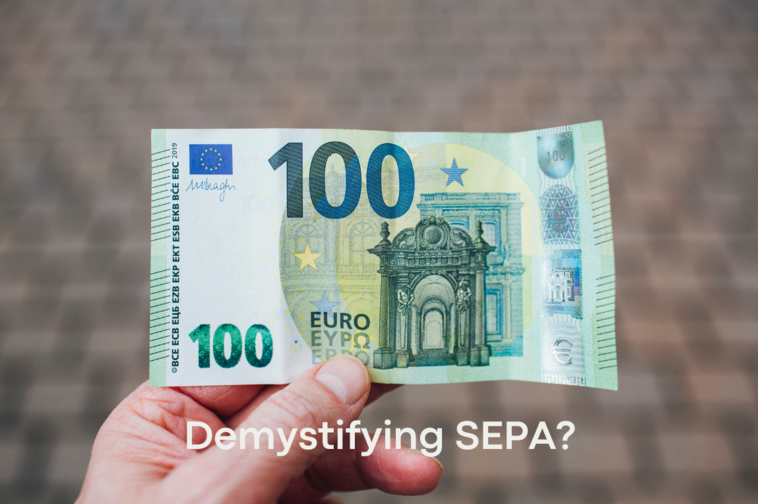Demystifying the Single European Payment Area (SEPA): A Comprehensive Guide

In today’s interconnected world, conducting cross-border transactions has become a routine aspect of our lives. However, the process of making payments across different European countries has historically been complex, time-consuming, and costly. To address these challenges, the European Union introduced the Single Euro Payments Area (SEPA). This guide aims to demystify the SEPA, shedding light on its purpose, benefits, and how to set up a euro SEPA account.
What is SEPA?
SEPA was established to simplify euro-denominated payments within the European Economic Area (EEA), which comprises 36 countries, including the European Union (EU) member states, Iceland, Liechtenstein, Norway, Switzerland, and Monaco. Its primary objective is to create a unified payments market, enabling individuals, businesses, and institutions to transfer funds across borders seamlessly.
One of the key components of the SEPA initiative is the euro SEPA account. This account allows users to make and receive payments in euros within the SEPA zone, utilizing standardized processes and technologies. It eliminates the need for multiple bank accounts in different countries and reduces transaction costs.
To open a SEPA account, one must first identify a bank that operates within the SEPA zone. Most major banks in Europe offer these accounts, and it’s essential to choose one that suits your specific needs, taking into consideration factors such as fees, transaction limits, and online banking capabilities. Once you have selected a bank, you can approach their nearest branch or explore their online account opening procedures.
Opening SEPA Account
The process of opening a SEPA account is typically straightforward. It usually requires providing identification documents, proof of address, and information about your occupation or business. Different banks may have specific requirements, so it’s advisable to check their website or consult with their customer service representatives for precise instructions.
After successfully opening your euro SEPA, you gain access to a range of benefits. Firstly, SEPA transfers are characterized by faster processing times compared to traditional cross-border transfers. Payments within the SEPA zone are usually settled within one business day, ensuring efficient fund transfers for individuals and businesses alike.
Moreover, the euro SEPA enables users to send and receive payments in euros across the SEPA zone using standardized formats, known as SEPA Credit Transfers (SCT). These transfers follow a set of common rules and technical standards, making the entire process smoother and more transparent. Additionally, the use of International Bank Account Numbers (IBANs) and Bank Identifier Codes (BICs) ensures accurate routing of funds, minimizing errors and delays.
In addition to SEPA Credit Transfers, the SEPA account facilitates SEPA Direct Debits (SDD). This payment method allows individuals and businesses to authorize recurring payments, such as utility bills or subscription fees, directly from their account. SDD transactions are governed by a robust framework of rules and consumer protection measures, ensuring peace of mind for both payers and payees.
Another notable feature of the euro SEPA is the availability of SEPA Instant Credit Transfers (SCT Inst). Introduced in 2017, SCT Inst enables near real-time transfers of funds within the SEPA zone, with maximum transaction times of 10 seconds guaranteed. This feature provides enhanced flexibility for urgent payments and contributes to the overall efficiency of the SEPA framework.
As the adoption of the SEPA continues to grow, more businesses and individuals are reaping the benefits of this standardized payments system. Whether you are a frequent traveler, a small business owner expanding across borders, or an individual who frequently sends money to family and friends in different SEPA countries, having a SEPA can significantly simplify your financial operations.
Conclusion:
In summary, the Single European Payment Area (SEPA) and the euro SEPA have transformed the way euro-denominated payments are made within the European Economic Area (EEA). The standardized processes, faster processing times, and simplified payment formats offered by SEPA contribute to a more efficient and seamless cross-border payments experience. By opening a euro SEPA account, individuals and businesses can take advantage of these benefits, enabling them to transfer funds across the SEPA zone with ease and convenience. As SEPA continues to gain momentum, the SEPA account has become an indispensable tool for anyone looking to navigate the complexities of cross-border transactions within Europe.

Pranab Bhandari is an Editor of the Financial Blog “Financebuzz”. Apart from writing informative financial articles for his blog, he is a regular contributor to many national and international publications namely Tweak Your Biz, Growth Rocks ETC.








